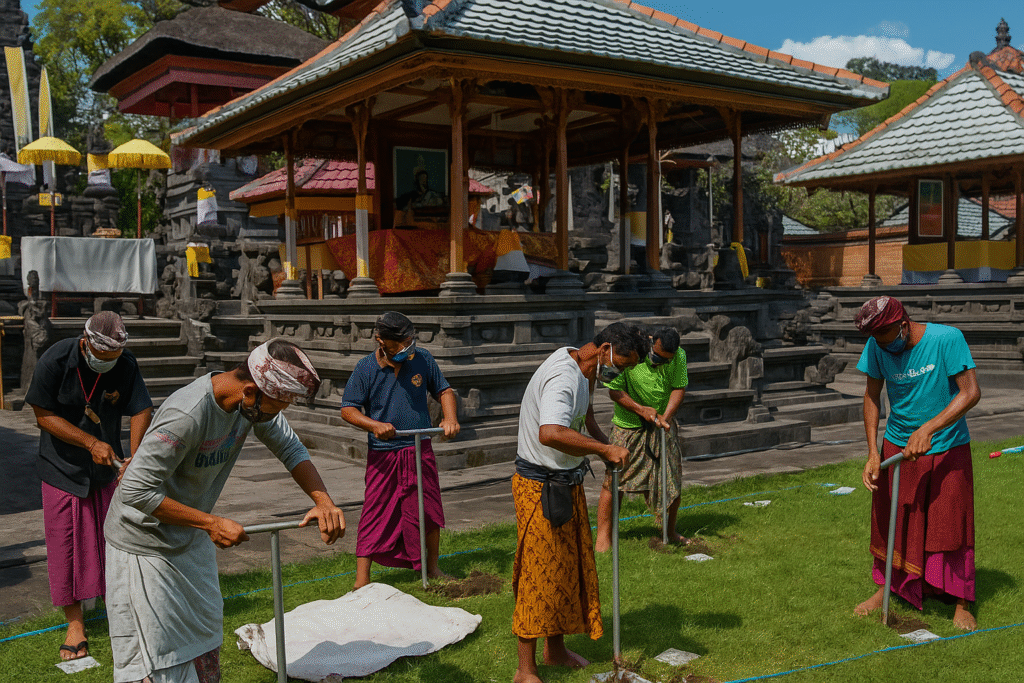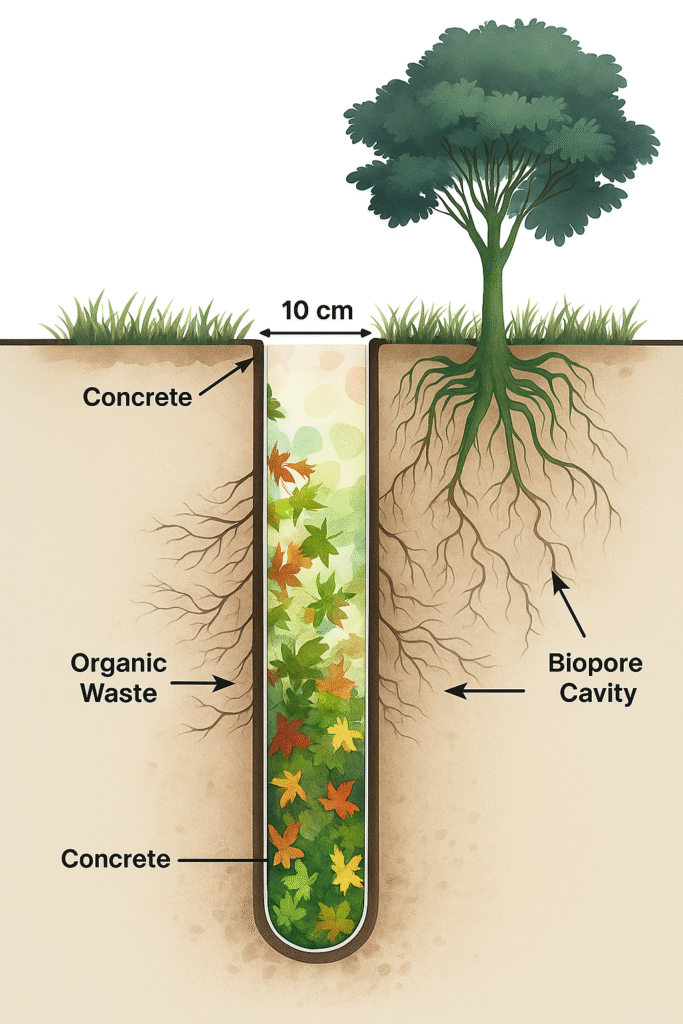
Bali’s charm lies in its stunning landscapes, rich traditions, and close-knit communities. Yet, during the rainy season, floods can disrupt daily life, damage property, and impact tourism—the island’s main source of income. While major drainage projects and river dredging help, many Balinese are turning to biopori holes (“lubang biopori”) as a simple, low-cost, eco-friendly way to anticipate floods before they happen.
What are Biopori Holes?

Biopori holes are narrow, vertical holes—about 10–30 cm wide and 80–100 cm deep—drilled into the soil to allow rainwater to soak into the ground rather than run off into streets and rivers. The holes are filled with organic waste like leaves or food scraps, which improve soil fertility while keeping the holes porous for water infiltration.
How Locals in Bali Anticipate Floods with Biopori

In many parts of Bali, especially in flood-prone neighborhoods and rice field areas, locals are using biopori holes in creative ways to stay one step ahead of heavy rains:
- Community Action Before Rainy Season
In villages like Cau Belayu, Tabanan, before the monsoon rains arrive, community members gather to dig biopori holes in communal areas, school yards, and temple grounds. This proactive approach helps absorb water where it naturally collects. - Household Participation
Families install several biopori holes around their homes and gardens. Because they double as composters, these holes manage household organic waste while preparing the soil to absorb more water during storms. - Banjar Involvement
Local banjar (traditional neighborhood councils) often organize gotong royong (community work days) to create rows of biopori holes along roadsides and drainage ditches. It’s a collective effort: everyone knows that the more holes are dug, the less likely flooding will be. - Collaboration with Schools
Schools in some districts run educational programs where students help make biopori holes in schoolyards. This way, kids learn about water conservation, flood prevention, and composting at the same time. - Monitoring During Rains
When heavy rains come, locals observe which areas flood less where biopori holes are present. They use this data to decide where to add more holes in the following year.
Benefits Beyond Flood Prevention

Locals notice several advantages besides reduced flooding:
- Improved groundwater: Wells don’t run dry as quickly because rainwater is stored underground.
- Healthier soils: Organic waste in the holes turns into compost, enriching the land for crops and gardens.
- Cleaner drains: Less organic waste clogs drainage systems.
- Stronger community ties: Building and maintaining biopori holes bring neighborhoods together through shared responsibility.
How Bali Can Strengthen These Efforts

To scale up this community-driven approach, Bali could:
- Provide free biopori tools in villages before rainy season.
- Set up local training on ideal spacing, size, and maintenance.
- Create a digital map showing biopori locations and flood-prone areas for better planning.
- Offer incentives for households that maintain a certain number of biopori holes.
- Integrate the practice into desa adat regulations to ensure continuity year after year.
Conclusion
In Bali, anticipating floods is becoming a community tradition, with biopori holes at the heart of the effort. What started as a simple idea has become a local, people-powered solution: dig before the rain, prevent floods, improve the land, and work together. As more Balinese embrace biopori holes, the island moves toward a future where nature and people collaborate to keep the land safe and fertile—even during the heaviest downpours.

